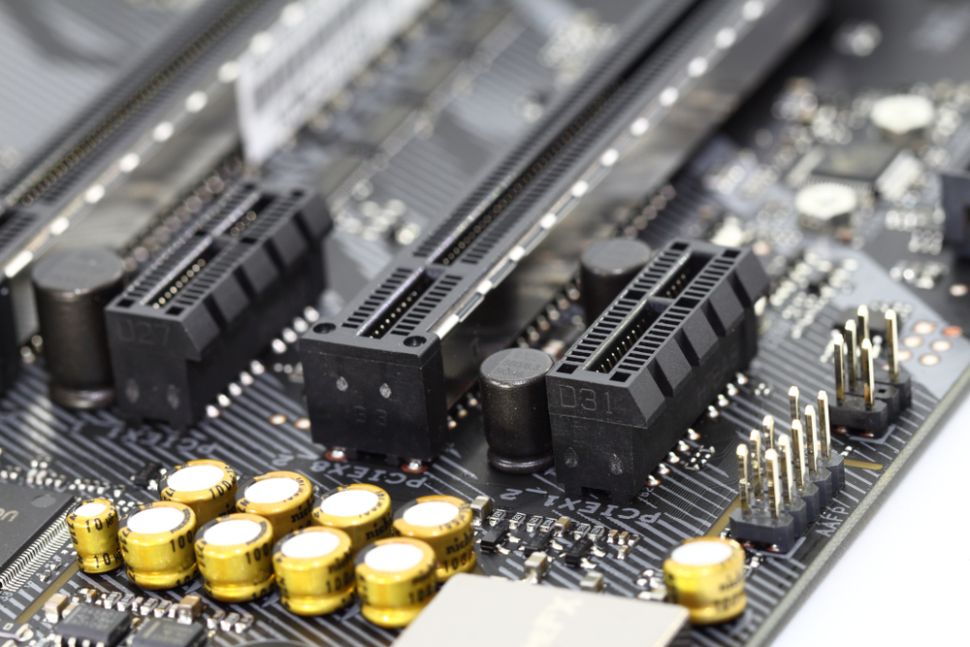PCIe Gen 4 - Opening the Data Floodgates

If you’re like our expert team here at Systel, you probably get fired up about the next-generation of computer technologies, especially those that will make a critical difference for users on the frontline. In this blog, we concentrate on the exciting developments happening in the world of PCIe Gen 4.0.
PCIe, or Peripheral Component Interconnect Express to give its full name, has been with us since the early 2000s, and it has evolved through three generations to expand the capabilities of computers and their ability to handle increasing amounts of data throughput.
The fourth and latest generation—PCIe Gen 4—introduces the kind of performance that permits massive amounts of data to be transferred between system components, at the kind of rates that are now increasingly being demanded by networked data-gathering/dissemination systems-of-systems.
This capability has particular application in the defense world, where the networking and fuzing of sensors, cloud computing, and multi-domain level dissemination of command and intelligence information are becoming key differentiators in the operational arena.
PCIe Gen 4 enables an increase in networking performance by a factor of 10.

Photo: PCIe Slots on a Motherboard Image credit: MMXeon/Shutterstock
Capability growth – PCIe Gen 4 vs Gen 3,2,1
In its original form the PCI card was an early parallel bus that allowed one processing unit to talk to one peripheral card.
It soon became obvious that a serial bus was needed. PCIe introduced a lane concept, with up to 16 lanes available. Each lane could transfer data at a rate of 2.5 gigatransfers per second (GT/s).
Gen 2 increased the rate to 5 GT/s, and is still used in systems that require less performance but a common interface. PCIe Gen 3—which is prevalent today—increased the transfer rate to 8 GT/s, allowing the addition of more, faster flash storage and the integration of high-performance graphics cards.
Gen 4 doubles the transfer rate per lane to 16 GT/s, offering up to 64 GB/s performance with very low latency. This enables the collection of huge amounts of data, as demanded by the increasingly inter-connected nature of operational systems.
Gen 4 applications – why is PCIe 4.0 important?
Data throughput has increasingly become a challenge in device-to-device communications. PCIe Gen 4 technology mitigates previous gen bandwidth constraints and enables the full use all gathered data and the processing power inherent in the computer system. As a result, the technology is being applied principally to systems that network numerous high-rate sensors and data sources.
Networked video is the primary “bandwidth hog” in the digital battlefield, especially if it is transmitted in uncompressed format, and a system can be fed from numerous sources. As an example, a single battlefield vehicle’s system can be receiving HD streams from 20 or 30 individual cameras.
Only PCIe Gen 4 is up to the task of transferring such large amounts of data from the network card into the processing unit.
Overcoming PCIe Gen 4 challenges
With new technology inevitably come new challenges.
Board design is one area that is affected by Gen 4 technology, with much finer tolerances being required. These introduce questions of reliability, and Systel is working on designs that meet reliability requirements while providing the desired performance levels within the platform constraints.
Size, weight and power (SWaP) constraints are always uppermost in engineering new systems, as is the question of cooling. The increase in data throughput brings with it an inevitable need for more power, which can be a considerable challenge in discrete, compact platforms such as vehicles.
On these platforms, the computer system is vying for power with other peripherals and sensors in a platform that could have a finite power capability of only 700 or 800 watts.
Increased throughput also makes cooling a major issue, requiring a change to the way computer systems are designed to provide the necessary heat dissipation capacity. Mounting cards directly on the walls of the LRU (line replaceable unit) module box is one answer to this challenge.
Many CPUs cannot process the extra data given by the extra throughput that Gen 4 provides but, then again, not all systems require the performance that PCIe Gen 4 offers, and Gen 4-compatible hardware is not yet widely adopted. However, Gen 4 is a back-compatible technology, permitting its partial adoption in a Gen 3 environment as a prelude to an upgrade at a later date.
Embracing the new tech
Systel offers significant engineering and manufacturing capabilities as well as key technology partnerships with leading industry suppliers. Systel is on the forefront of integrating the latest generation commercial-off-the-shelf (COTS) components into rugged computer systems, designed and manufactured in the USA. This allows us to bring the latest technology to market faster than the competition and into the hands of our soldiers as quickly as possible, enabling them to maintain their competitive edge and reducing program risk.

Photo: Systel’s Raven-Strike fully rugged, high-performance embedded computer in stylized sand and dust environment
Systel offers rugged rackmount servers with PCIe Gen 4 technology now and is developing fully rugged embedded edge computing solutions with PCIe Gen 4 capabilities along with the latest NVIDIA Ampere GPUs and up to incredibly high-speed and high-bandwidth networking.
Let's Talk!
Have questions or want to learn more?
Contact our team and let’s talk!
